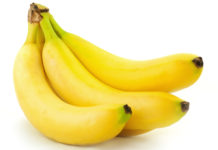Honey is a sweet sticky liquid obtained by bees and other insects from flowers. Honey as food, or taken home to store as food for the young. The honeybee collects and stores this substance in its hive, leading to bee culture. Honey is highly nutritive, especially as a fuel for the body’s energies, as four-fifths of its components are carbohydrates, the remainder being water with a trifle of protein.
The saccharine elements are mainly grape-sugar and some fruit-sugar, which are so readily affected by yeast that various fermented drinks are made with honey as their basis, of which the best known are the mead and metheglin in great demand among all Teutonic peoples a thousand years ago, and the equivalents of which are still made in Russia, Abyssinia and elsewhere. Before the general manufacture and use of cane sugar, honey was largely used for sweetening, and was put into a significant number of cakes and confections now rare or only locally manufactured.
Honey was indeed, much more important to the ancients than to us; as might be inferred from its frequent mention in the Bible as a sign of abundance or the resource of the destitute. It has well-recognized medicinal properties, especially as a demulcent against hoarseness, catarrh, etc., in promoting expectoration in breast disorders, and as an ingredient in cooling and detergent gargles. Its effect is usually laxative as well.







